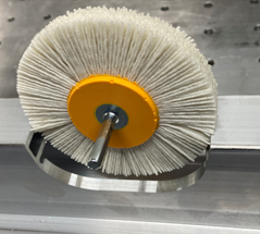
Deburr edges & contours
Particularly on edges and contours, undesirable deformations can occur during the manufacturing process of components due to material displacement. These burrs must be removed to eliminate the risk of injury and to ensure an accurate fit of the components.
Why is it essential to deburr edges and contours?
The process of deburring edges and contours removes sharp edges from the material's surface. Deburring can be done either manually or by using a machine tool. The process is essential because it improves the quality of the material and makes it more functional. Removing burrs is crucial because they can cause damage to components and operators during assembly, shipping, or use of the product.
Aluminium crossbar with slight burr residues. Hollow chamber profile, rounded, with burr residue at the milling area.
What are the challenges faced when deburring edges and contours?
The biggest challenge in deburring is to remove all sharp residues from edges and contours while maintaining the shape, size, and fit of the component. Other challenges are:
- obtaining the ideal surface finish for the product
- selecting the appropriate deburring process and tool depending on the component (size, structure, material properties, and type of burr)
Deburring edges and contours with wheel brushes
In addition to many other deburring processes such as barrel finishing or thermal or chemical deburring, the use of technical brushes has proven successful for removing burrs. Brushing is a mechanical process.
Round brushes are used for deburring workpiece edges and contours. They are guided over the cut edge or contour. The rotation of the brush removes the burr from the workpiece.
While steel, sintered metal, or aluminum are primarily deburred with abrasive fill material such as ceramic, silicon carbide, or aluminum oxide, a corrugated steel wire or stainless steel wire is used for cast iron and non-ferrous metals.
The abrasive trim material virtually "grinds off" the burr. When using wire bristles, on the other hand, the burr is (mechanically) struck off. As the size of the burr increases, the wire diameter of the brush is correspondingly larger.

Example of a component-optimised brush, trim material nylon with ceramic corundum.